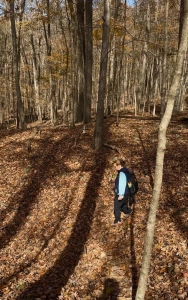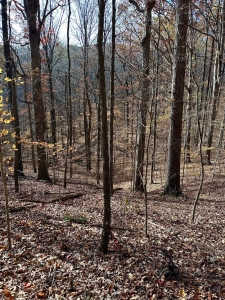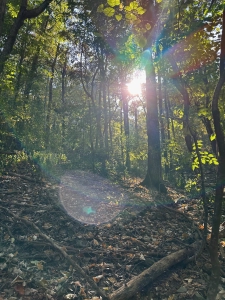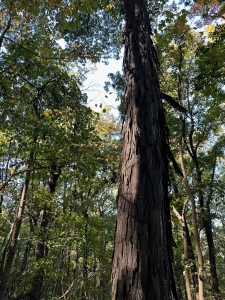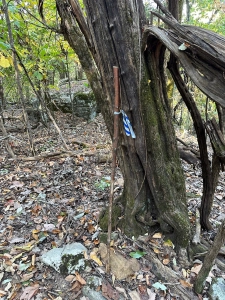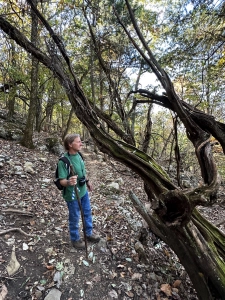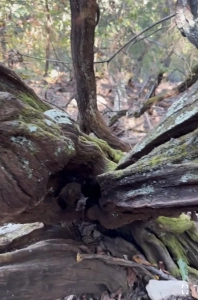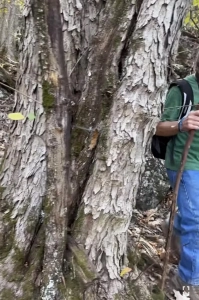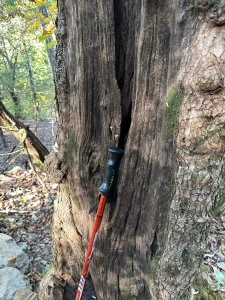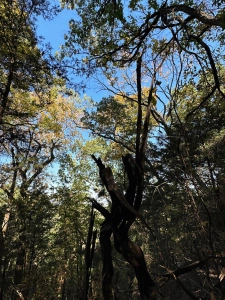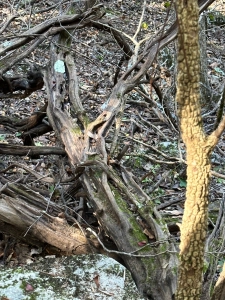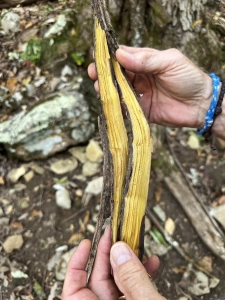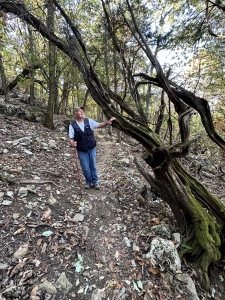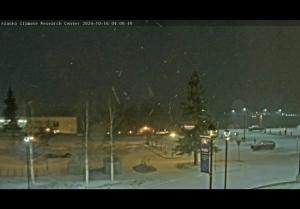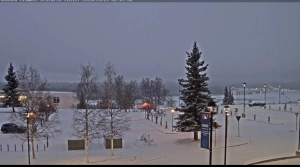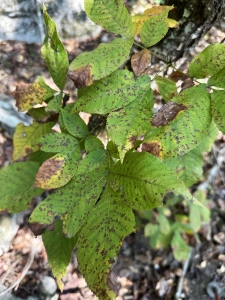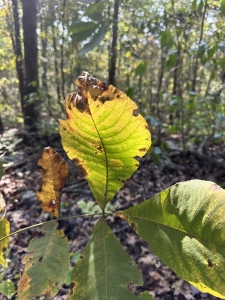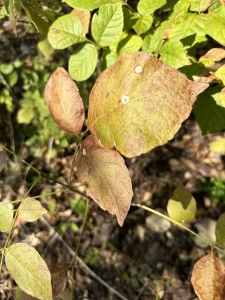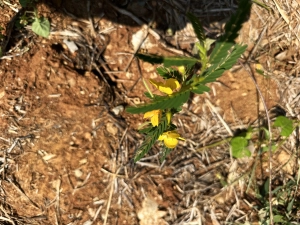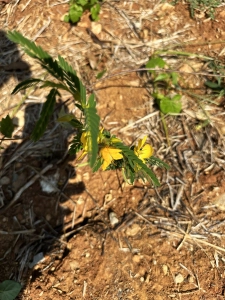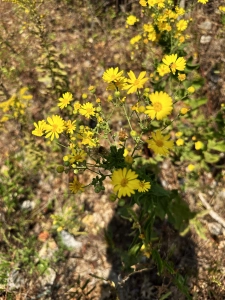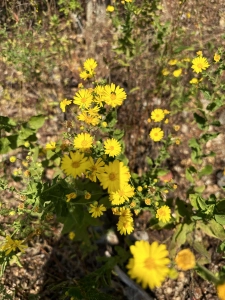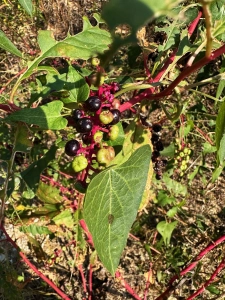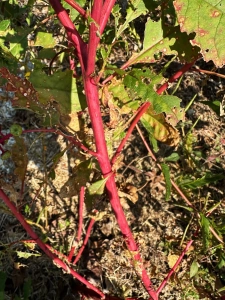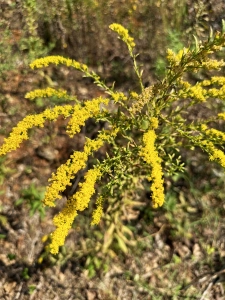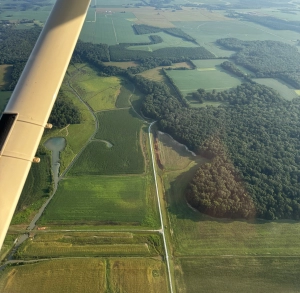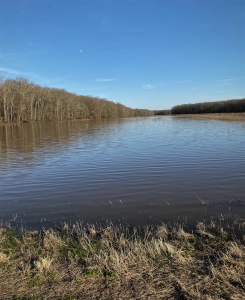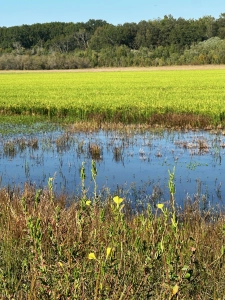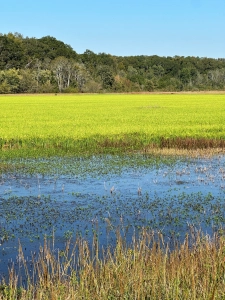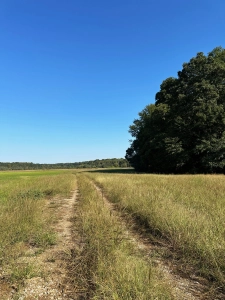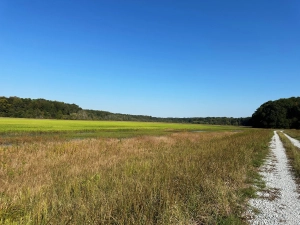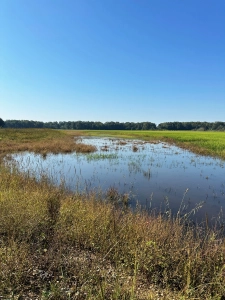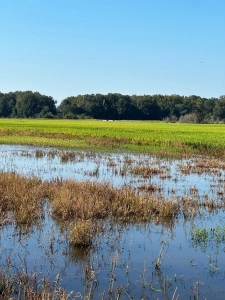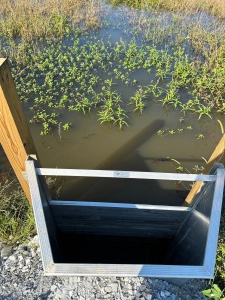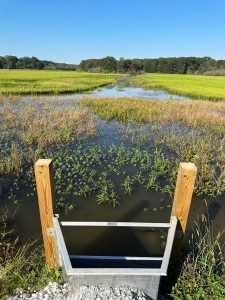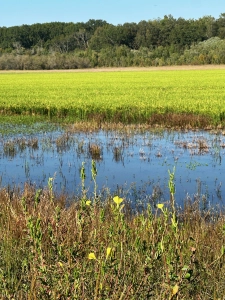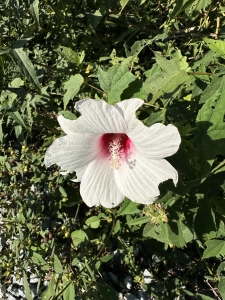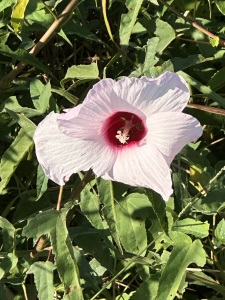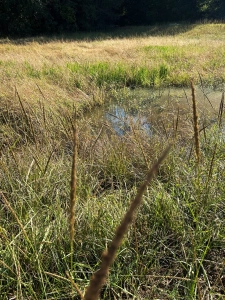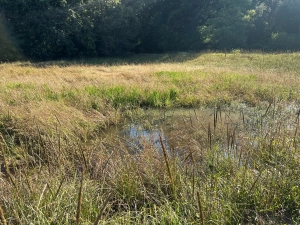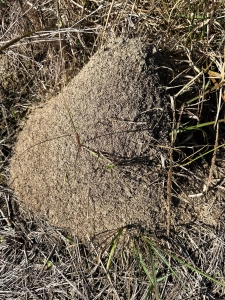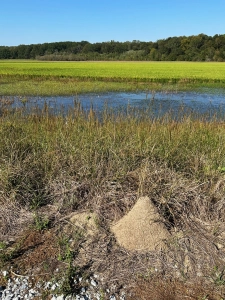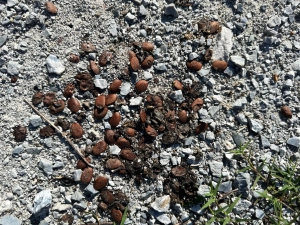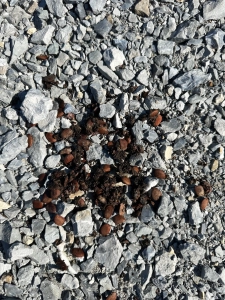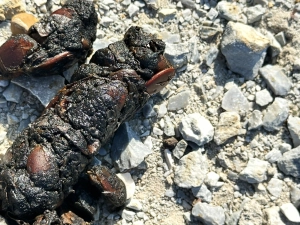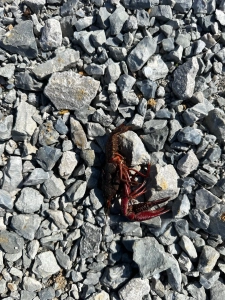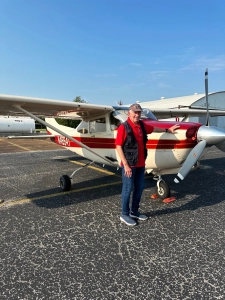Mild Fall Afternoon at the Woodland Flint Creek Trail on Wheeler National Wildlife Refuge!
Fellow retired forester Chris Stuhlinger and I co-led a group of 22 OLLI (Osher Lifelong Learning Institute, University of Alabama in Huntsville) members on a Nature Walk along Flint Creek Trail (Wheeler National Wildlife Refuge) on Sunday afternoon, November 10, 2024. Two days earlier the Sunday forecast predicted an 80 percent probability of rain. Nary a drop dampened us on a grand afternoon.
A Nature walk differs from what we term a hike. I insist that our walks be saunters, where we wander in the habitat, carefully discovering and examining what mysteries and wonders lie hidden in plain sight. Our hikes hurry through the ecosystem at a pace that limits revealing the wonder beyond a superficial glance. Like John Muir, who disdained hiking, I quickly lose contact with the hardcore hikers. I stop to probe, take photos, and record a brief video, or two. A fellow inquisitive hiker may lag with me to find what we may. I am a saunterer, dedicated to the end. I find it amusing that when my time stretched endlessly ahead in my youth, I rushed to destination after destination. Today when time rushes ahead, I’m in no hurry. I don’t want to miss anything.
Flint Creek Bay
Flint Creek flows from the south into Wheeler Lake, a TVA impoundment…the dam 40 miles downstream on the Tenessee River. Entering the extended dormant season, The Corps of Engineers has already lowered the water level to allow greater flood control storage capacity for seasonal winter and spring rains. Mud flats are present where summer water stood.
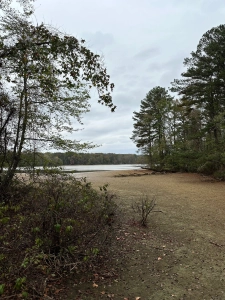
A great blue heron hunts the shallow water bordering the mud flats.
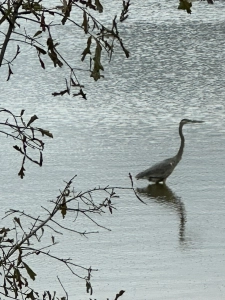
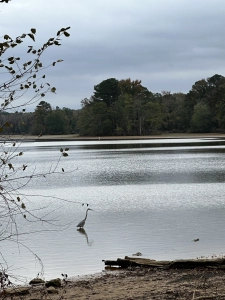
I recorded this 24-second video as the heron took flight:
A pond cypress at the mudflat edge shows the summer water level stains. Knees also evidence the summer level.
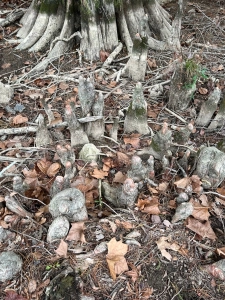
I recorded this 58-second video encompassing the bay, the mud flat, and the cypress.
The riparian forest envelops Flint Creek Trail as our group exited the boardwalk. I’ve always enjoyed both the openess of boardwalks and closed forest trails — the best of both worlds at the Flint Creek Trail!
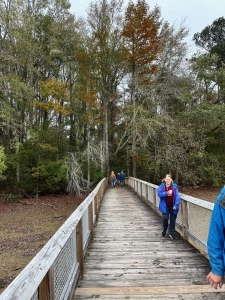
I recorded this 57-second video as we crossed the boardwalk to the wooded Flint Creek Trail:
Something about the boardwalk held us in place, urging us to enjoy the ironic attraction that holds people transfixed by an extensive mudflat, bird and woodland mammal tracks, and even human footprints.
Flint Creek Trail’s Riparian Forest
Allow your mind to reject the false impression that forests are forever. Picture this moist fertile field in corn and soybeans during the early 1930s, soon to be abandoned, seeding to windblown and bird-scattered germinants of annuals, perennials, shrubs, and trees. A near jungle of vegetation yielded to forest, the most aggressive and faster growing trees prevailing. The winners in this stand are 100 feet tall.
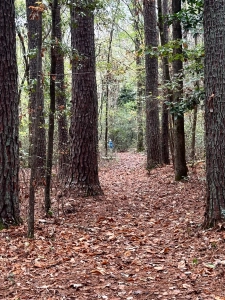
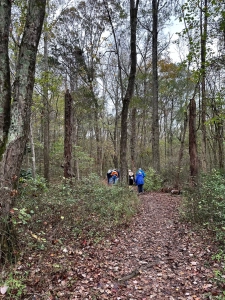
Our group looks skyward. Chris redirects their attention to an understory paw paw tree below right.
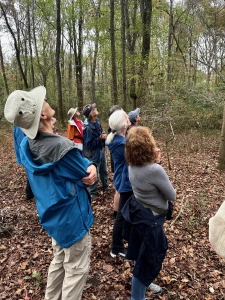
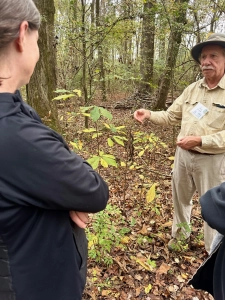
The yellow poplar commands the dominant canopy and strikes an impressive pose below left. A Southern-region emblematic flowering magnolia seems content growing in full shade.
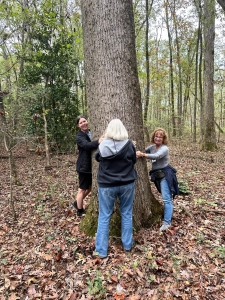
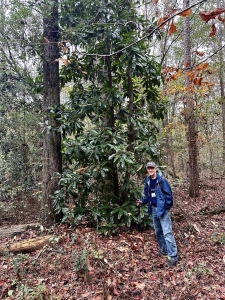
Special Woodland Treats
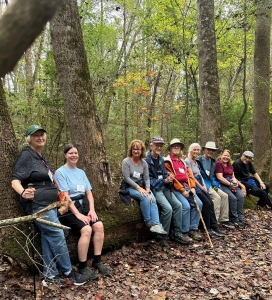
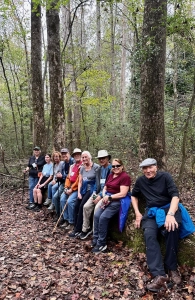
A special moment at a place of magic and wonder! Had we been hiking, strung out as the faster among us surged ahead, we might not have noticed and lingered at the natural living bench. By universal acclaim and smiling faces, this was a worthy and enjoyable stop.
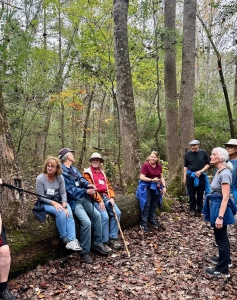
Trees are not alone in partaking of full sunshine in the upper crown. Supple jack vines hitched a ride vertically as the trees began ascending 90 years ago from the fallow fields. Our major southern forest vines are the same age as the trees, and grow upward with the trees. Wrap and hold on tightly. Let the trees do the heavy lifting.
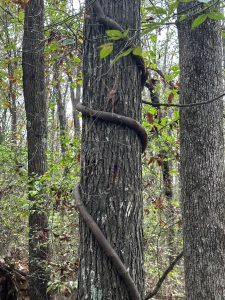
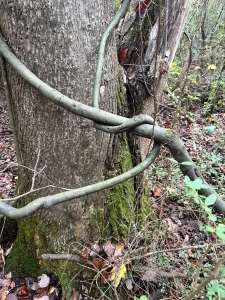
Sasafras roots are worthy of an inquisitive inhale — oh, the fragrance of root beer!
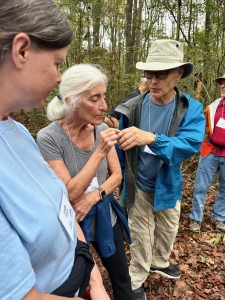
Again, a Nature Walk provides unlimited opportunities for learning and appreciating natural wonders.
Glimpses of the Fungi Kingdom
I’ve repeated in these Great Blue Heron photo essays that death and decomposition are a major element of life in our forests. We spotted several individuals of Coker’s Amanita, its bright white caps announcing its presence.
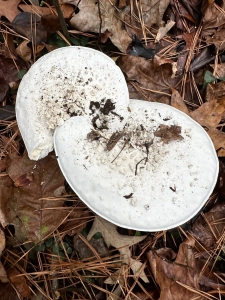

Steve Stewart snapped a nice shot of this pair and their beautifully gilled underside.
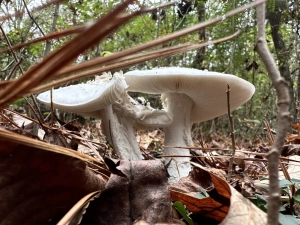
We discovered three edible species of wild mushrooms: honey mushroom, the beige individual at left; oyster mushroom held in the same hand; amber jelly mushroom at right.
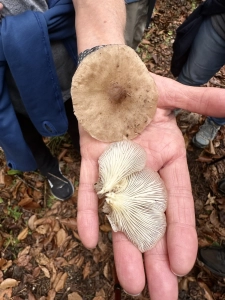
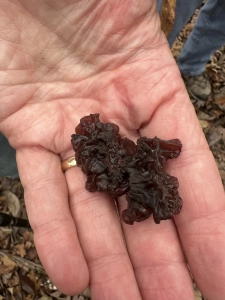
Don’t take my word regarding edibility. Always do your own homework. I consume only species about which my knowledge is 100 percent certain, and then only when cooked.
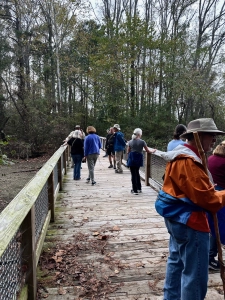
We exited the trail via a return trek across the boardwalk. The clouds had broken, removing all hope that drought relief would bless our Sunday evening. We lingered, enjoying the evening and each other’s companny. Had our walk been a hike, I would have emerged from the forest after most had departed for home. John Muir abhored the word “hike”:
I don’t like either the word [hike] or the thing. People ought to saunter in the mountains – not ‘hike’!
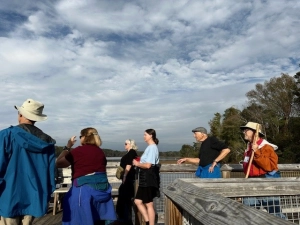
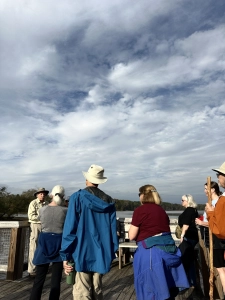
Muir, as he so often did, nailed the sentiment we all shared:
I only went out for a walk and finally concluded to stay out till sundown, for going out, I found, was really going in.
This 50-second video captures our group recrossing the boardwalk to the parking lot as the sky cleared, erasing any hope that the promised drought-abating rain would bless our Sunday evening:
Thoughts and Reflections
I offer these observations:
- When my time stretched endlessly ahead in my youth, I rushed to destination after destination. Today when time rushes ahead, I’m in no hurry, content to saunter.
- I love the trees reaching heavenward and the fungi intent on decomposing them.
- So much in Nature lies hidden in plain sight, awaiting discovery by curious minds and searching eyes.
Inhale and absorb Nature’s elixir. May Nature Inspire, Inform, and Reward you!
Note: All blog post images created & photographed by Stephen B. Jones unless otherwise noted. Please circulate images with photo credit: “©2025 Steve Jones, Great Blue Heron LLC. All Rights Reserved.”
Another Note: If you came to this post via a Facebook posting or by an another route, please sign up now (no cost… no obligation) to receive my Blog Post email alerts: http://eepurl.com/cKLJdL
And a Third: I am available for Nature-Inspired Speaking, Writing, and Consulting — contact me at steve.jones.0524@gmail.com
Reminder of my Personal and Professional Purpose, Passion, and Cause
If only more of us viewed our precious environment through the filters I employ. If only my mission and vision could be multiplied untold orders of magnitude:
Mission: Employ writing and speaking to educate, inspire, and enable readers and listeners to understand, appreciate, and enjoy Nature… and accept and practice Earth Stewardship.
Vision:
- People of all ages will pay greater attention to and engage more regularly with Nature… and will accept and practice informed and responsible Earth Stewardship.
- They will see their relationship to our natural world with new eyes… and will understand more clearly their Earth home.
Tagline/Motto: Steve (Great Blue Heron) encourages and seeks a better tomorrow through Nature-Inspired Living!
Steve’s Four Books
I wrote my books Nature Based Leadership (2016), Nature-Inspired Learning and Leading (2017), Weaned Seals and Snowy Summits: Stories of Passion for Place and Everyday Nature (2019; co-authored with Dr. Jennifer Wilhoit), and Dutton Land & Cattle: A Land Legacy Story (2023) to encourage all citizens to recognize and appreciate that every lesson for living, learning, serving, and leading is either written indelibly in or is powerfully inspired by Nature. All four of my books present compilations of personal experiences expressing my deep passion for Nature. All four books offer observations and reflections on my relationship with the natural world… and the broader implications for society. Order any from your local indie bookstore, or find them on IndieBound or other online sources such as Amazon and LifeRich.
I began writing books and Posts for several reasons:
- I love hiking and exploring Nature
- I see images I want to (and do) capture with my trusty iPhone camera
- I enjoy explaining those images — an educator at heart
- I don’t play golf!
- I do love writing — it’s the hobby I never needed when my career consumed me
- Judy suggested my writing is in large measure my legacy to our two kids, our five grandkids, and all the unborn generations beyond
- And finally, perhaps my books and Blogs could reach beyond family and touch a few other lives… sow some seeds for the future
[Me with my hand on a sapling in group photo — courtesy of Chris Stuhlinger]
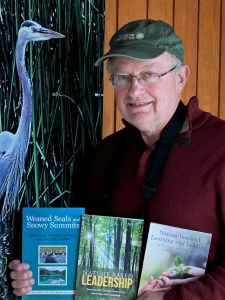
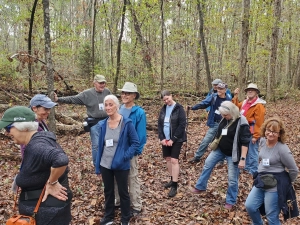

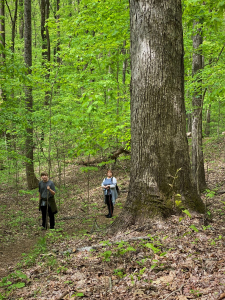
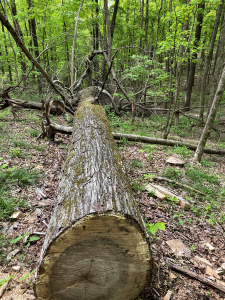
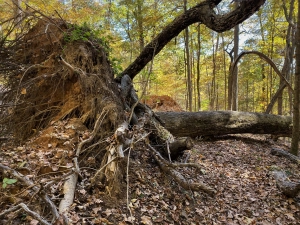
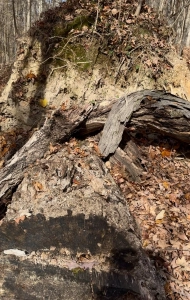
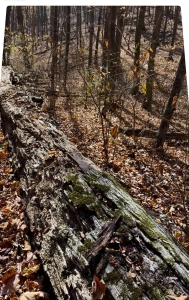
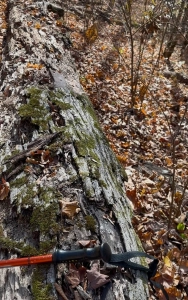
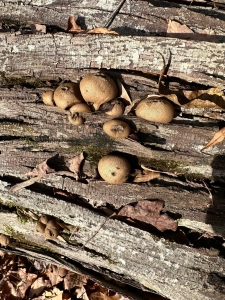

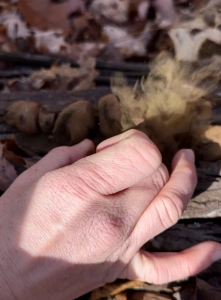
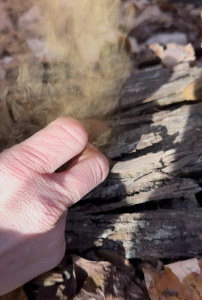
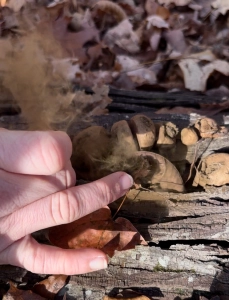
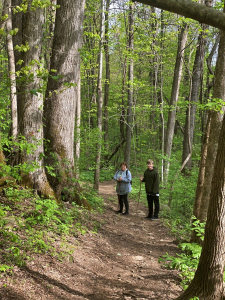
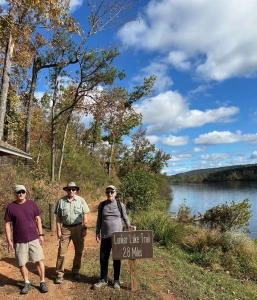
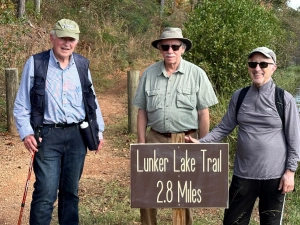
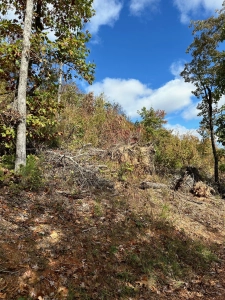
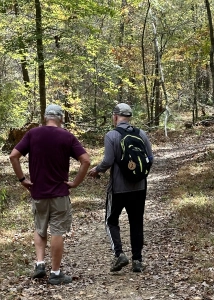
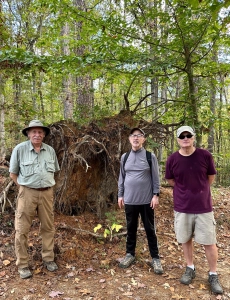
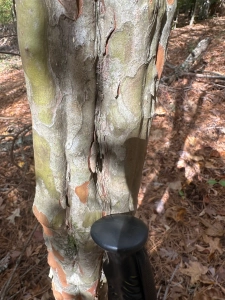
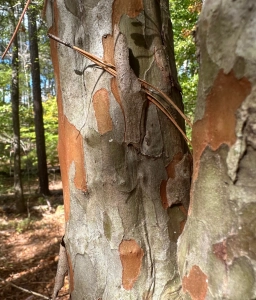
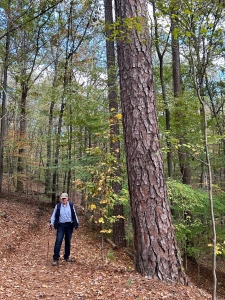
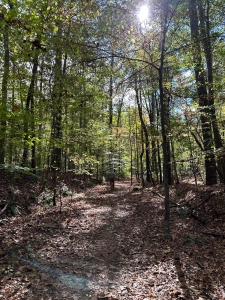
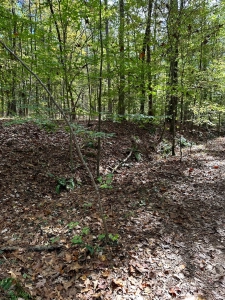
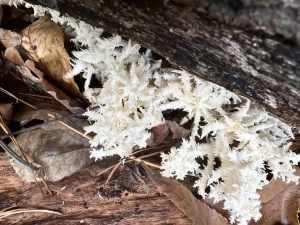
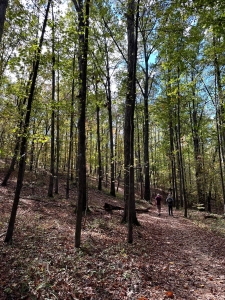
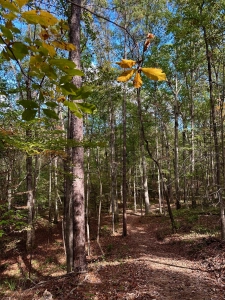
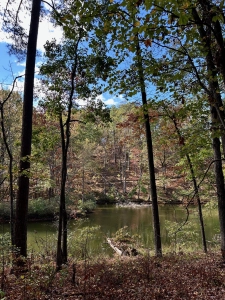
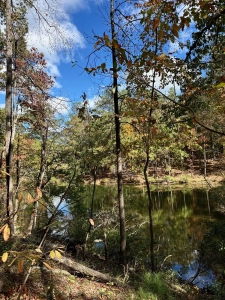
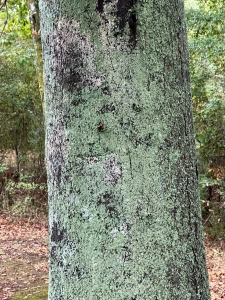
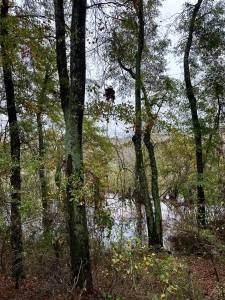
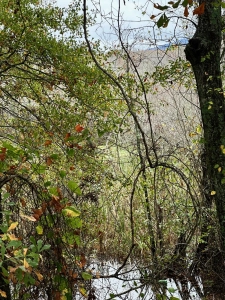
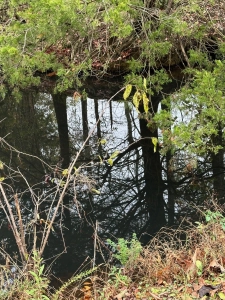
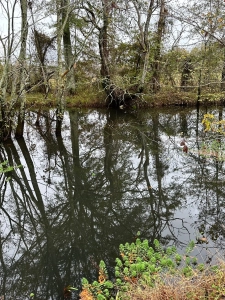
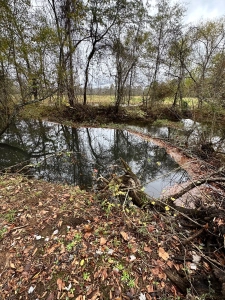
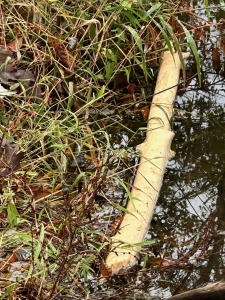
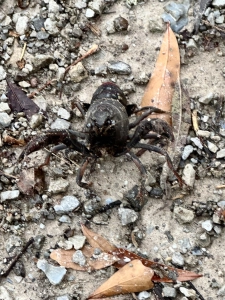
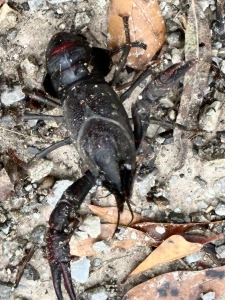
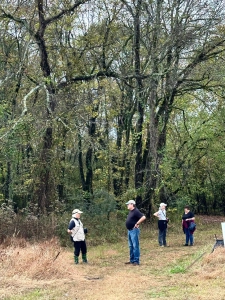
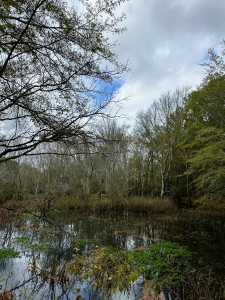
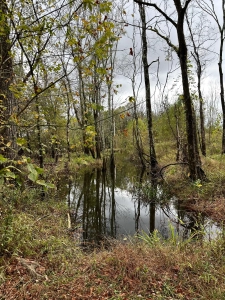
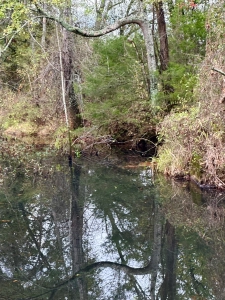
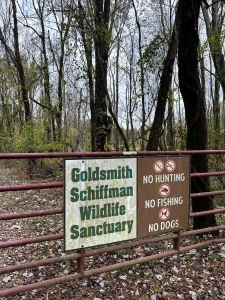
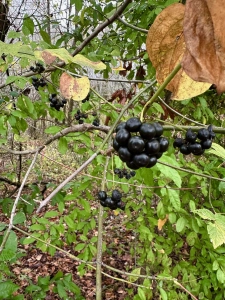
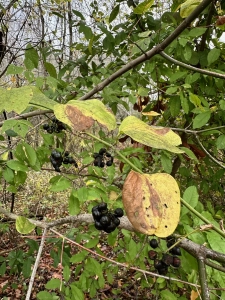
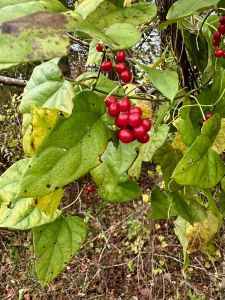
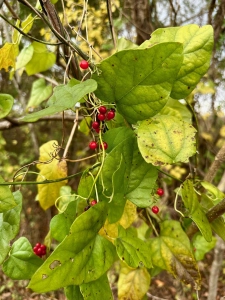
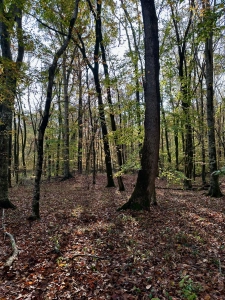
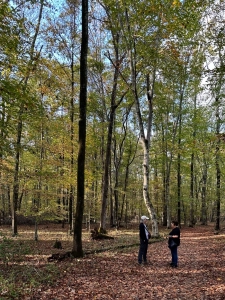
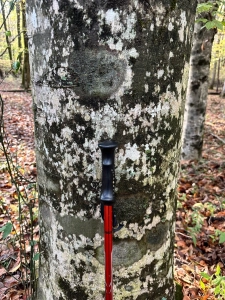
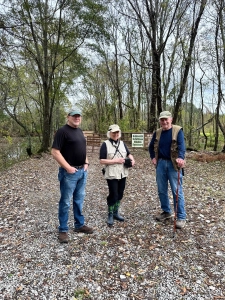
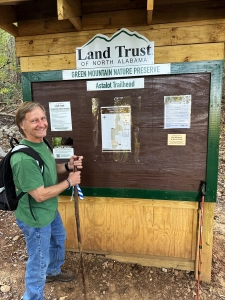
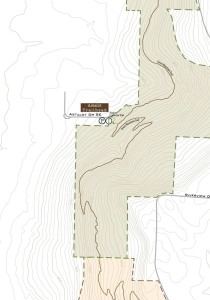
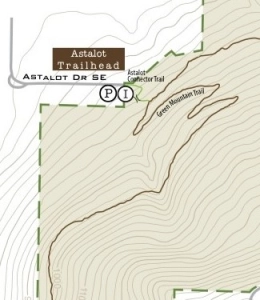
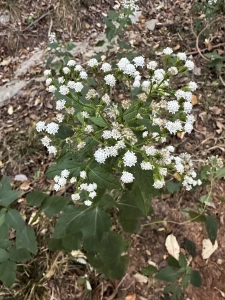
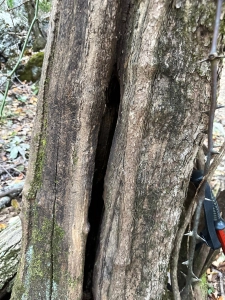

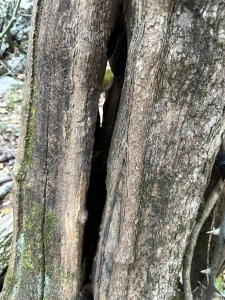

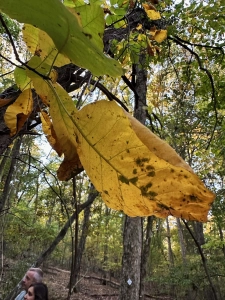
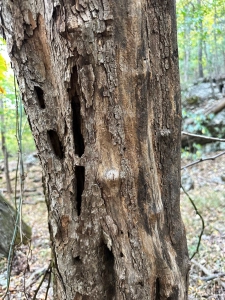
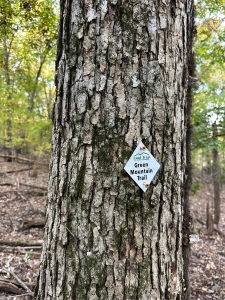
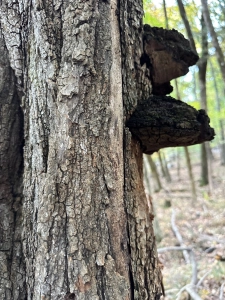
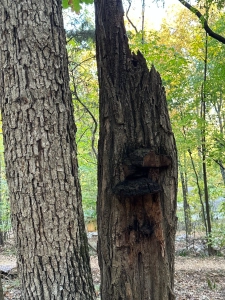
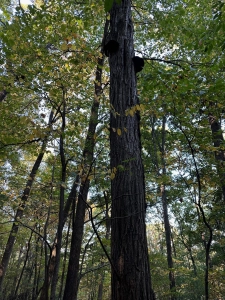
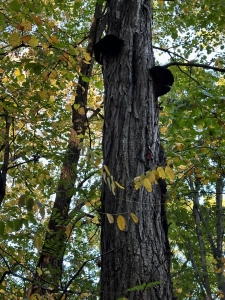
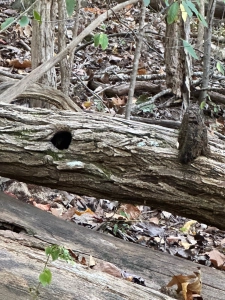
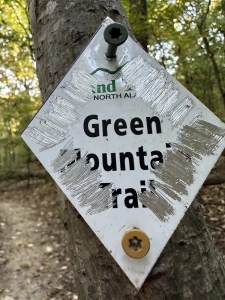

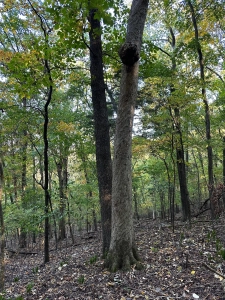
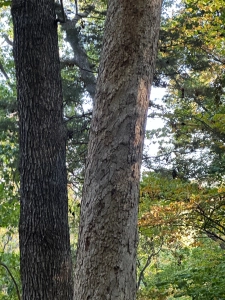
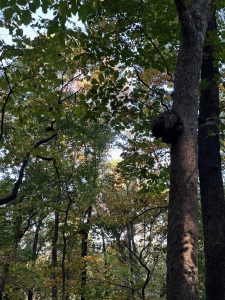
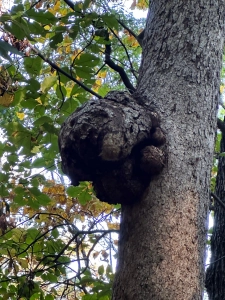
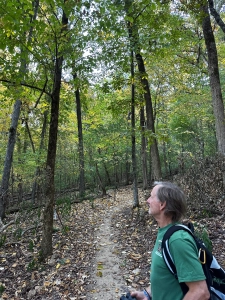
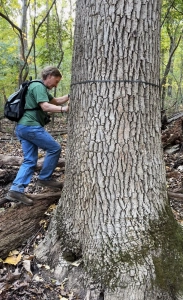
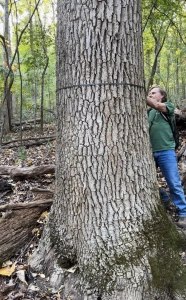
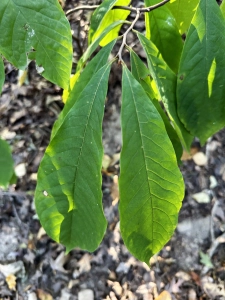

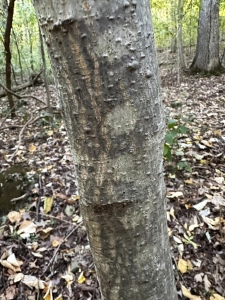
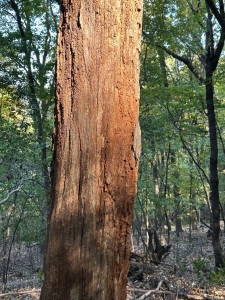
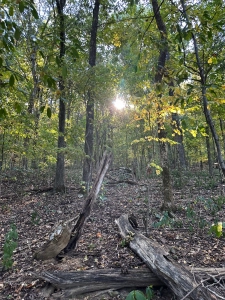
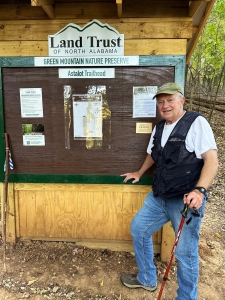
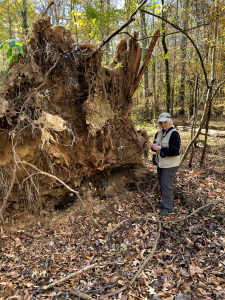
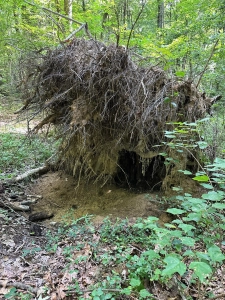
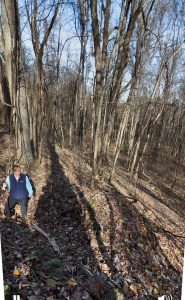
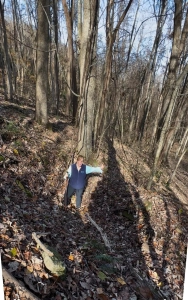
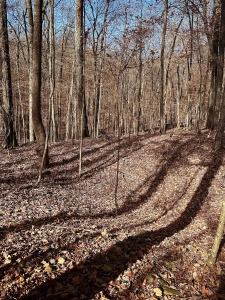
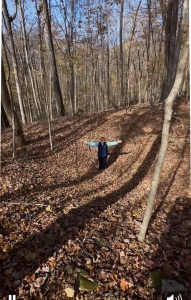 Amber walked into this sinkhole (dimple) that is 25-feet across and 10 feet deep.
Amber walked into this sinkhole (dimple) that is 25-feet across and 10 feet deep.